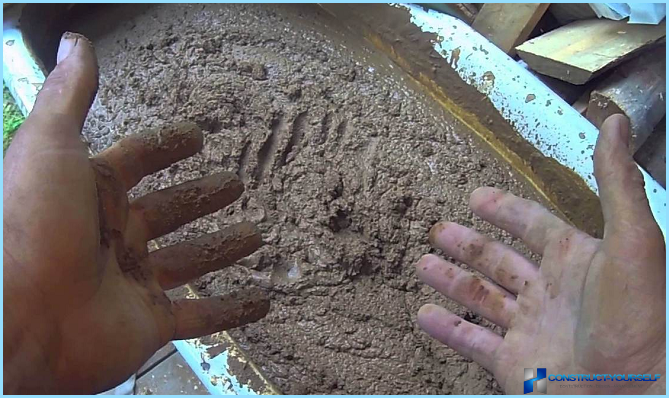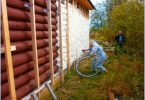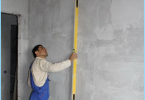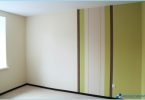The contents
- Stucco for residential
- The proportions of plaster for external works
- What kind of cement and sand is better to use
A good plasterer, as a good Mason, has a lot of their own secrets about which walls and in what proportion to prepare mortar for plastering of the surface. Most of the good specialists are avid conservatives and used to use not ready construction mixes, but the sand and cement, mixed in certain proportions.
The mixing of the solution ↑
For plasterer-lover’s romp with the preparation of the plaster with your hands is much harder. Easier and safer to hire a specialist. But most of us are willing to take risks and to try in with the cement, clay or lime mortar for plasters, for example for garage or house.
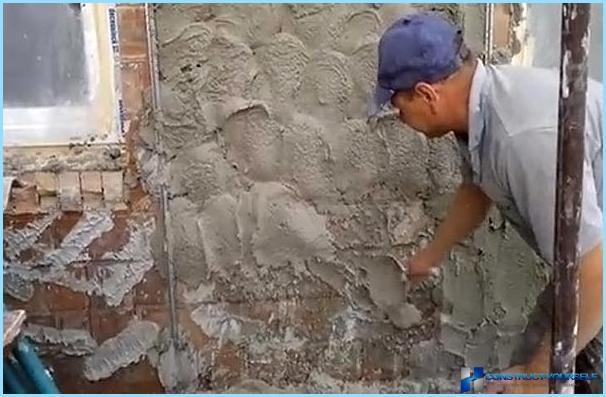
Is considered most suitable for private houses and apartments plastering mortar based on the simple proportions of cement, sand, clay or lime. In this composition, but in different proportions of the components, you can:
- Plastering bare brick or cinderblock walls soupstrainer country house, garage, shed;
- Repairing a crumbling piece of plaster inside the building and outside the home;
- To make repairs in the old (new) apartment with the removal of the old plaster and applying a new wall.
When properly selected proportions and technology installation of the plaster layer thickness of from 10 to 20 mm must:
- keep up with brick or concrete base, not to crack, to burst or to be one «cake»;
- to provide good water vapor permeability, but not to let moisture into the walls, be resistant to temperature extremes and moisture.
- If you ever cook with your own hands mortars for bricklaying – so will cope with the preparation of a composition for plastering the walls. The work is almost the same, just need to find the proportions for each case individually.
Preparing with their hands the cement-sand mixing plaster houses ↑
In a private house or apartment, there are three main types of premises, each of which requires its own structure and proportions of the plaster. All major versions are based on the cement. Pure clay or lime mortars will not be able to provide the necessary properties of plaster.
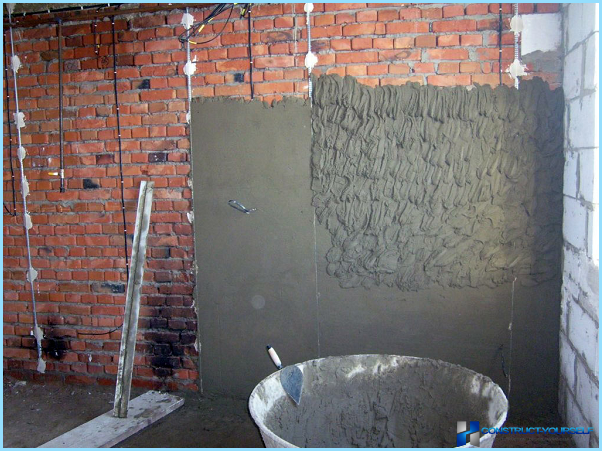
Stucco for residential buildings ↑
Any dwelling sanitary norms must be well ventilated, to be consistently warm and comfortable. Therefore, the walls and ceilings of any residential room must plasterers with solutions containing proportions:
- For bedroom, hall, children’s take 2 parts of cement to 500 or 400 grade, coarse sand 6 parts lime – 1 part. First, the rough layer can be performed with the addition of 1 part of a good cast, then in the finish proportions for plastering coarse sand to replace fine-grained and add 1/10 of the weight of the liquid plaster polyacetate adhesive;
- For the kitchen, corridor, pantries, bath or toilet are used the proportions of 1 part cement, add 4 parts of sand and an adhesive additive, the plaster is applied one, thin layer;
- For areas that require maximum insulation of walls, in the proportions for mortar can be used fat clay.
If a layer of this plaster gives a very thick or fragile, what happens when skinny types of clay, use a solution of sand, clay and cement in proportion 4:8:1. To increase strength, sometimes the solution was added 10% of ground mineral fibers or chopped asbestos. But in this case to use a mortar for plastering in residential areas not only in the attic, in the boiler room or in similar structures.
The proportions of plaster for exteriors ↑
Good, just the Golden rule says – it is impossible to plaster external walls in sub-zero temperatures, windy weather or under direct sunlight. Plaster is even the right proportions, maybe not immediately fall off, but keep steady and surely will not be exact. With strong drying in the sun the applied layer of plaster sprayed with water from a garden sprayer or conventional wet broom.
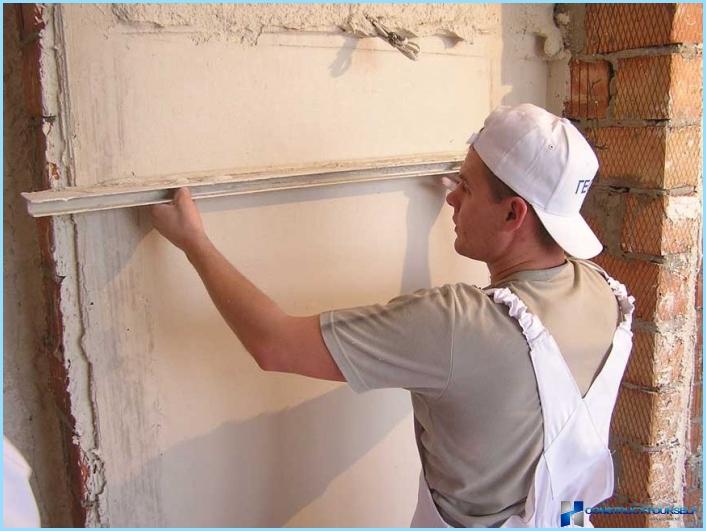
The proportions for mortar plaster for external works about the same as for domestic, but half the amount of lime.
Several different and technology. First of all, the plaster is performed in several stages.
In the first stage, perform wet soil. This means, on a clean surface sprayed a thin, a few millimeters of a solution of plaster. The weight proportions of 20 kg 500-th of cement 4 buckets of washed river sand and two liters of the adhesive base. Sometimes, when plastering smooth concrete surfaces, in the mix add 100 grams of detergent for better grip with cement.
The next layer of plaster without detergent, with an increase in the proportion of sand content of up to 5 buckets and a small addition of 10-15 kg, the smallest mineral fibers. At this stage put on the wall the maximum layer of plaster mass, finally aligning and preparing for final surgery.
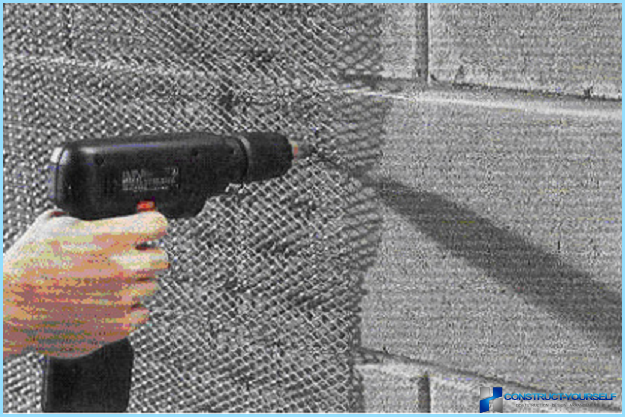
After 10 hours you can apply a finishing layer. The proportions of sand can be increased to 6 buckets, but to use the material with maximum of the fine fraction. After the finish troweling and smoothing the wall is completely dry at least two days.
The most durable and sturdy proportions by the number of embedded cement is ground, then each new layer needs to be with increased content of sand and lime.
In addition to proportions, in plaster it is very important the correct application of the material to the surface, that is often done in the form of individual pieces of the solution, with a power press or do on the surface of the walls.
What kind of cement and sand is better to use ↑
For plastering use pure clay and sand inclusions. If it is not possible to wash the material several times to sift through the construction of the sieve, thereby to remove activate and select the finest for finishing compositions. Large and largest sand, as sand grains, can be used in appropriate proportion in soil solutions stucco.
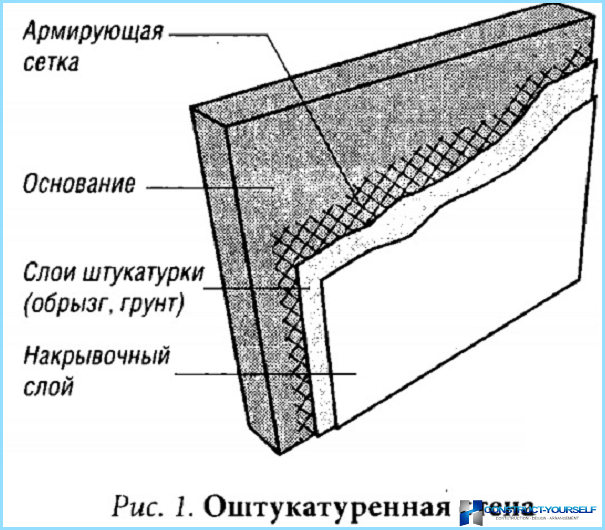
From Portland take the cement of grade not lower than 400 minutes. The higher the grade of cement, the stronger the shrinkage and the higher the risk of cracking. Before kneading the cement is always tested for adhesion and shrinkage after curing.
If during the working day, the solution is not generated, it is discarded, and further the plastering cannot be used. Professionals do not work with the plastering solutions at 30 and more degrees of heat.
Clay and lime mortars for plasters ↑
For interior work you can use plastering mass of clay and lime paste, in the ratio of 1:1, with a small addition of wood dust or shavings. Clay and lime needs to be soaked in water from a ratio of 1 part clay or lime to 1.5 parts water. After absorption of water both components are thoroughly kneaded and crushed in order to find and remove all the fine inclusions of stones or foreign debris. Components of the plaster mix thoroughly and put on the wall.
If plastering is used only clay and sand, you must carefully select their proportions in the mixture. Clay is a very complex material, its properties depend strongly on the concentration of hydrated compounds of silicon and aluminum. Sometimes the wizard to increase the plasticity of the clay, using pottery techniques. The clay mass is cut with a shovel on tape, shift and stir. 5-10 such rifling clay becomes very stretchy and durable.
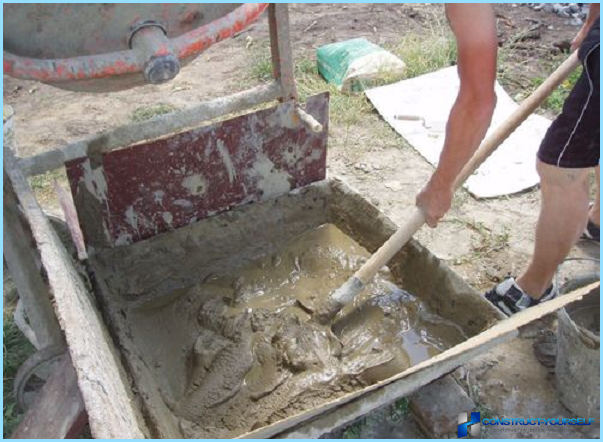
Usually such solutions close up of wall made of wooden slats, panelled construction with insulation and waterproofing layer. Mixtures of lime, sand and gypsum are often plastered with his own hands the walls of gypsum blocks, prefabricated structures made of plasterboard and galvanized profile.
To store the clay-lime mortar may be a few days, it dries very slowly, because of this, thick layers of plaster can be deformed, especially on draught or in cold wet weather. In the case of emergency, to speed up the drying of the intermediate layer on the wet surface of the clay plaster is applied a sheet of newspaper. They slowly take the water from the plaster and promote even drying it without deformation.
Conclusions and recommendations ↑
Every specialist has their proven methods of strengthening plaster layers, even in low proportions or «heavy» the walls. Practicing these skills with your hands takes years. So sometimes it is not necessary to waste time on imitation of the technique of plastering the walls, and to use the services of masters.

